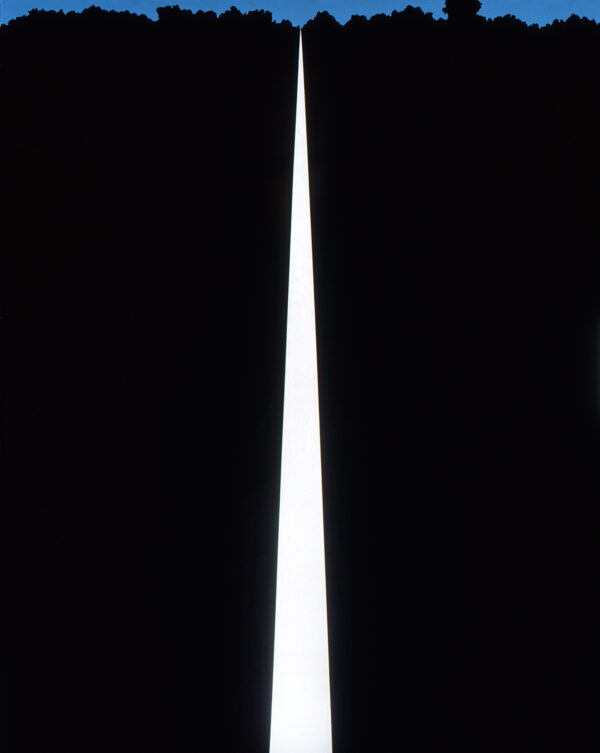
Landscape
D'Arcangelo, Allan
1965
Artwork Information
-
Title:
Landscape
-
Artist:
D'Arcangelo, Allan
-
Artist Bio:
American, 1930–1998
-
Date:
1965
-
Medium:
Acrylic on canvas
-
Dimensions:
86 3/8 x 68 1/4 inches
-
Credit Line:
Wichita Art Museum, Gift of Mr. and Mrs. Samuel Dorsky
-
Object Number:
1976.5
-
Display:
Not Currently on Display
About the Artwork
Allan D’Arcangelo has described Landscape as “part of a group of my early works visually commenting on the American landscape as it is embedded in our memory.”1 Successfully combining Pop art’s interest in American vernacular imagery with the minimalist aesthetics of hard-edge painting, D’Arcangelo’s picture transforms the common experience of high way driving into a bold abstraction. D’Arcangelo renders the road as a taut, flat field of black, stretching across the entire lateral surface of the picture. Bisecting the road is a bright white median strip that rises from the base of the canvas and narrows gradually to a point a few inches from its top. There, the highway meets the horizon, defined by the crisp outlines of black foliage silhouetted against a thin blue band of sky.
D’Arcangelo’s emphatic horizon line and perfect one-point perspective create a strong illusion of spatial recession, which is simultaneously denied by the pictures flat, unmodulated paint surface. Lawrence Alloway observes that D’Arcangelo’s paint surface itself has a kind of blankness, a finish that involves the spectator neither in admiring high finish nor in awareness of sensuous surface. It is, maybe, the analogue of the unnoticed but pervasive newness of highway engineering, of smooth surfaces… and clear enameled signs.”2 D’Arcangelo suppresses all detail and avoids atmospheric perspective by painting both fore ground and background with uniform hardness. “The effect,” writes Alloway, “is somewhere between a streamlined tunnel, pulling us in, and a flat wall… His vista is as unelaborated, and unsupported by auxiliary spatial cues, as a rudimentary perception diagram. His perspective is like the raw material for perceptual judgment.”3
Born in Buffalo, New York, D’Arcangelo earned an undergraduate degree in history from the University of Buffalo in 1953 before moving to New York City that same year. In New York he studied art privately from 1955-56 under Boris Lurie. He then enrolled at Mexico City College from 1957-59, where he studied with John Golding and Fernando Belain. From 1963-68 D’Arcangelo was an instructor at the School of Visual Arts in New York. In 1973, he was appointed professor of art at Brooklyn College, and, from 1983 on, served concurrently as graduate instructor at the School of Visual Arts. He also has held a number of visiting artist positions at art schools around the United States.
1. Allan D’Arcangelo, letter to the author, 12 August 1996. Gallery labels on the back of the painting indicate that it has also been exhibited under the title Block #1, but, according to D’Arcangelo, the proper title is Landscape.
2. Lawrence Alloway, “Hi-way Culture: Man at the Wheel,” Arts Magazine 41,
no. 4 (February 1967): 32.
3. Ibid., 33.